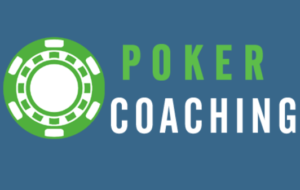I was recently told about a dicey situation from a $1/$2 game that you should strive to avoid while playing. A loose, weak player with $80 limped from middle position and our Hero found Jd-7d in the cutoff with a $200 stack. Hero decided to raise to $10.
Hero told me that he thought he could outplay the limper, winning most pots where the limper missed while sidestepping difficult situations where Hero happens to flop well but is still behind. While this may be true, as stacks start to get shallow ($80 is only 40 big blinds), you should mostly raise limpers with strong big cards and hands that have a lot of potential to make strong postflop hands, like Tc-9c. Jh-7h is simply too weak to justify raising. Hero should fold and wait for a better spot. An added bonus of playing only reasonable hands (besides making better postflop hands) is that your raises over limpers will tend to elicit most folds compared to when you frequently raise. If you are mindlessly aggressive, even the most obtuse opponents will eventually figure out your strategy.
As expected, the limper called. The flop came Jc-6d-2d. The opponent checked and Hero bet $10 into the $23 pot.
I like this bet size, although given the board is quite uncoordinated, Hero could bet even smaller, perhaps $8. Hero should have a reasonable range advantage and given Hero is not concerned about getting outdrawn, his main priority should be building a pot while also keeping the opponent in. As Hero bets larger, his opponent will be more inclined to fold marginal pairs and Ace-high, which are the exact hands Hero wants action from.
The opponent called. The turn was the (Jc-6d-2d)-6s. The opponent (with $60 remaining in his stack) checked and Hero bet $40 into the $43 pot.
This is where Hero really messed up. It is important to understand that the opponent should have many more 6s in his range than Hero, meaning the opponent now has more premium made hands in his range than Hero. Also, when Hero bets large, the opponent may only continue with Queens and better, all of which beat Hero. When you have a marginal made hand and a draw, the marginal made hand strength is the overriding factor in how you play your hand (because you will usually miss your draw), meaning you should play as if you have a marginal made hand, not a draw. If Hero did not have a flush draw, he should check behind or bet tiny. Instead, when Hero bets large, the opponent will play almost perfectly, which is a disaster for Hero.
If you check behind on the turn and the opponent bets the river, you can easily call. If the opponent checks, you can then consider making a value bet.
The opponent thought for a while before folding 9-9 face-up. Like I said, what a disaster!
 Thank you for taking the time to read this blog post. If you enjoyed it, please share it with your friends. If you want to continue working on your poker skills, be sure to sign up for your free 7-day trial to my interactive training site, PokerCoaching.com.
Thank you for taking the time to read this blog post. If you enjoyed it, please share it with your friends. If you want to continue working on your poker skills, be sure to sign up for your free 7-day trial to my interactive training site, PokerCoaching.com.
Be sure to check back next week for another educational blog post. Thanks for reading!

Excellent analysis as usual
I am thinking the same thing, fold pre-flop. If you do get where he was, check the turn and re-evaluate the river. You can make a small value bet on the river.
Jd-7d is much too strong to fold to a limp. Seeing the flop one way or the other is mandatory.
I like the weekly blog even sometimes it clear to me. The way you analyze the always give some values and new thinking of how you think
Thanks! I am glad you like them.
Thank you Jonathan, I thought I understood and agreed with everything until I saw your reply to a comment saying that seeing the flop with Jd-7d is mandatory, which contradicts the post where you say Hero should fold, I am now a bit confused
Ah, I missed the stacks were shallow. Sorry about my confusion.
“Given hero is not concerned about being out drawn” – as I understand it, this is your philosophy Jonathan, so long as hero is charging or overcharging villain to draw against him. So my question is, is there ever a time when hero is concerned with being outdrawn such that hero jams in his stack to maximize fold equity even if hero believes he is now ahead? Thx for your insight and incredible teaching tools.
The problem with trying to make draws fold is it often also results in worse made hands fold. It is difficult to find examples where draws fold but junky made hands still call.